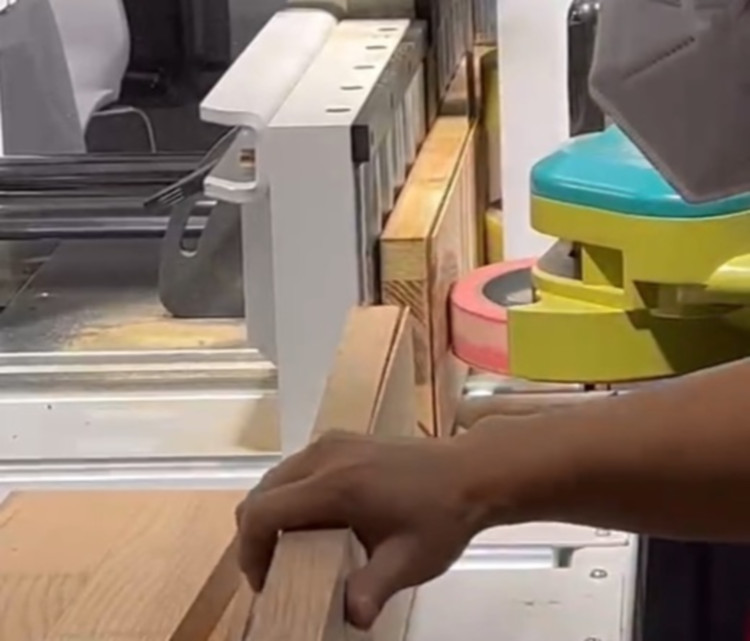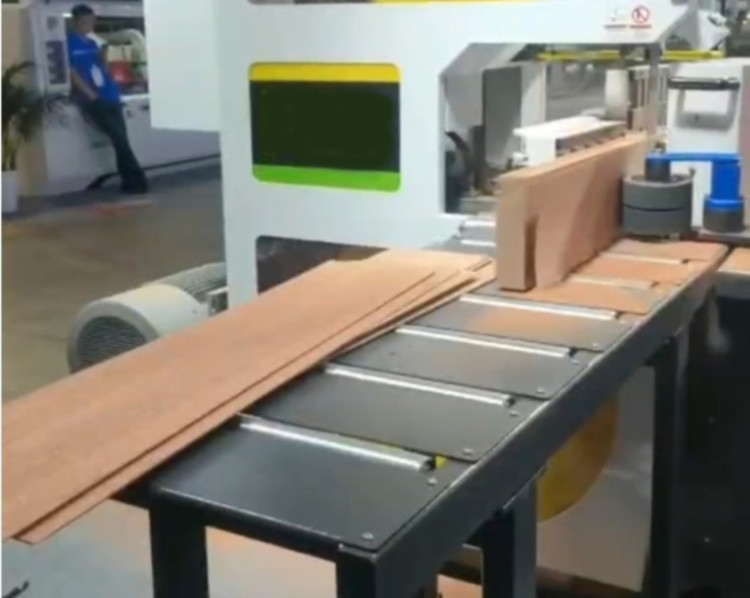
Why are thin wooden boards so widely used in the home furnishing market?
2023-09-29 10:00The Rise of Thin Wood Panel Craftsmanship
The home manufacturing industry is a market that demands strict requirements in terms of materials, craftsmanship, and design. In recent years, with the rise in raw material prices and the need for process upgrades, many manufacturers have been seeking ways to "reduce costs and increase efficiency," particularly among North American home furniture manufacturers. As a result, the craftsmanship of thin wood panel splicing has gained increasing attention and widespread application.
In the market, there are mainly three methods for producing thin wood panels: sawing, rotary cutting, and slicing, with sawing being the most widely used method.

The thin wood board by sawing after finger joint and side joining

Sawing thick wood board into thin wood panel
The thin wood panels that have been spliced can be applied to the following home furnishings:
Flooring: By using the natural grain patterns of thin wood panels, decorative patterns can be created on the surface of the flooring, achieving a minimalist, stylish, and high-end decorative effect.
Wooden doors: In the traditional production process of wooden doors, the ends of the wood panels are prone to breakage or even splitting. To address this issue, more and more wooden door factories have started using wooden strips as frames and primary structures, with thin wood panels used as veneers. In the case of solid wood doors, many manufacturers will use solid wood strips to splice together as the door core, and then use thin wood panels as veneers to achieve a visually unified and coordinated effect for the solid wood door. Furthermore, the stability of the door is improved as the wood strips and thin wood panels that have been sawn and re-spliced using high frequency technology release the internal stress of the wood, making the solid wood door more durable.
Furniture countertops: Applying thin wood panels as veneers on furniture countertops can enhance the structural stability of solid wood countertops. It effectively prevents deformation caused by thermal expansion and contraction due to changes in temperature and humidity, ensuring the overall flatness and stability of the solid wood countertop.
Engraving requirements for solid wood furniture surfaces: By using thin wood panels as overlays on solid wood furniture surfaces, more space is provided for engraving operations. This can significantly elevate the quality and profit margin of solid wood furniture.
The high frequency thin board joining machine has significant advantages in the home furnishings market:
 JYC high frequency thin panel joining machines are widely exported overseas
JYC high frequency thin panel joining machines are widely exported overseas
The JYC high frequency thin panel joining machine has gained significant importance in the domestic and international home furniture woodworking processing market due to its outstanding performance and wide range of applications.
1. Improved product quality: Using a rf thin panel splicing machine significantly enhances the quality and stability of the products. The precise control and high-frequency heating technology of the machine ensure accuracy and consistency in splicing, avoiding the uncertainties of manual operations. This results in more coordinated and durable products with higher aesthetic appeal compared to traditional stitching and splicing equipment.
2. Increased product variety and design flexibility: The hf thin furniture panel joining machine enables the production of a wider range of home furnishings. By employing different splicing patterns and wood species, it adds more design elements and personalized touches to meet the increasingly diverse demands of consumers.
3. Increased production efficiency: The radio frequency thin furniture board joining machine boasts high production efficiency, allowing for fast and accurate completion of panel splicing. Its unique keyboard type pressing system and negative pressure feeding system contribute to a smoother production process, saving significant labor and time costs.
4. Reduced production costs: Long-term usage of the machine results in substantial labor cost savings. Additionally, its precise control and higher material utilization rate significantly reduce material waste, thereby lowering production costs.
5. Environmentally friendly: The high frequency thin board joining machine effectively utilizes wood resources, reducing the consumption of natural resources and aligning with the current societal emphasis on green and sustainable practices.
Unique advantages of the JYC high frequency thin panel joining machine:
1. Suitable for splicing 2-7mm solid wood thin panels, primarily targeting rotary-cut, sawn, and sliced materials.
2. Single-operator function, completing one panel in just 30-50 seconds.
3. Dual-system pressure ensures stable and highly even joining, with an error margin as low as 0.1-0.2mm.
4. Unlimited width joining allows for automatic sawing and stacking according to specific requirements.
5. Utilizes the distinctive keyboard type pressing and negative pressure system, effectively ensuring high flatness and product yield in thin panel joining.
6. Supports remote maintenance and lifelong free system upgrades.
